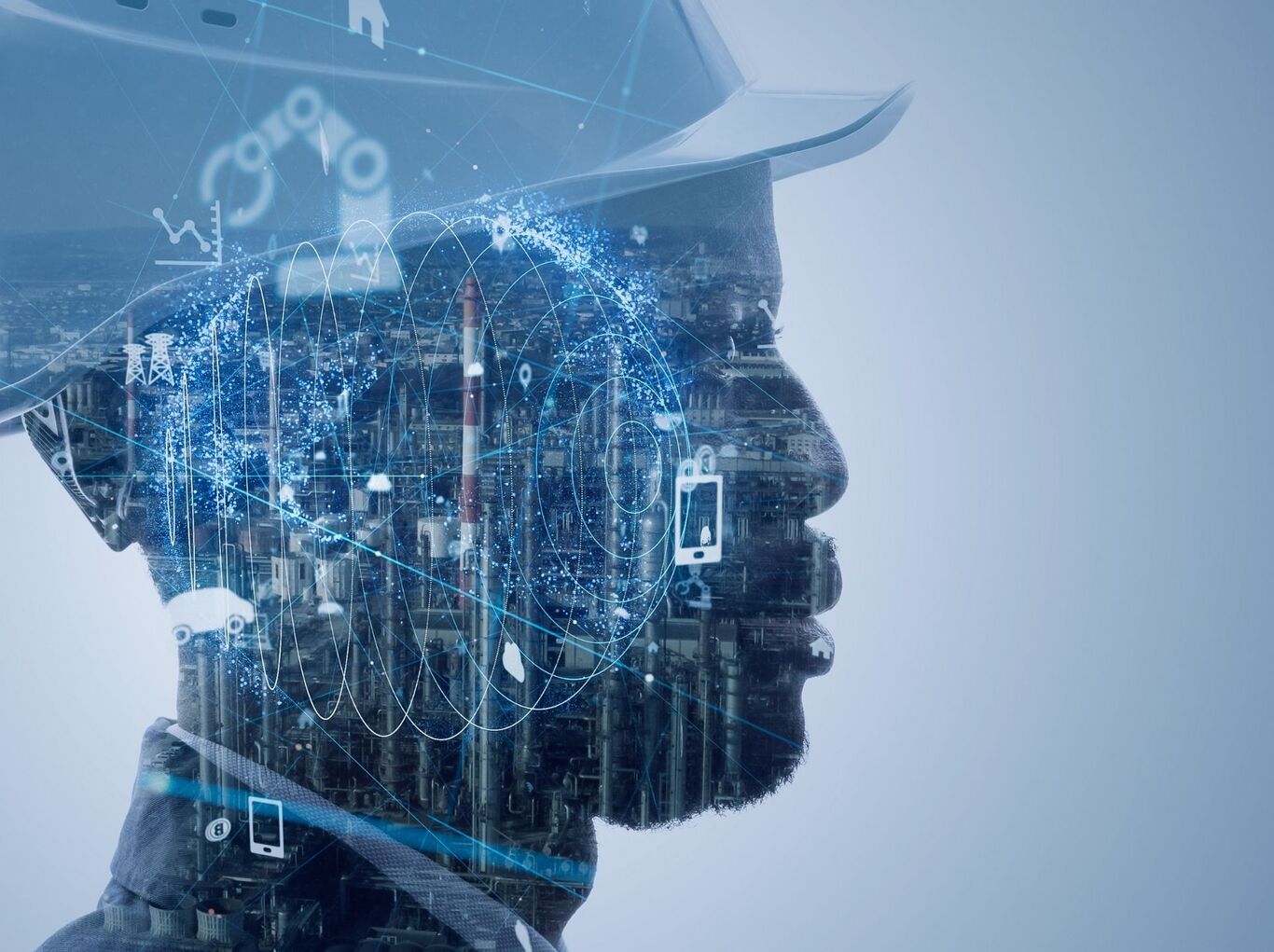Process Automation: History, Benefits, Real-World Use Cases

You build the perfect automated workflow. It scrapes invoices, updates your CRM, and triggers emails until someone uploads a scanned image instead of a PDF. Suddenly, the whole thing crashes.
That's been the story with most process automation tools: they work great until reality gets messy. The moment there's a missing field, a delayed input, or a new tool in the stack, the logic breaks. You see, bots don't improvise. They follow rules, no matter how outdated or brittle.
But expectations have changed. Post-ChatGPT, teams want automation that understands intent, adapts on the fly, and works across tools without breaking every other Tuesday. That shift, from rules to reasoning, isn’t optional anymore. It’s the next leap.
Thanks to advances in AI in process automation, businesses now have access to agentic systems that learn, plan, and make decisions in real time. This blog breaks down that evolution, explains what’s powering it, and shows where agentic AI is already changing finance ops, customer support, and beyond.
What is Process Automation?
Process automation is the use of technology to streamline routine, repeatable tasks. This could mean things like invoice approvals, status updates, or lead routing, so your team isn’t stuck doing the same things over and over again. Also known as business process automation or workflow automation, it’s a key driver of operational speed and scale.
However, now we've moved beyond simple bots and rule-based flows. Today's agentic AI systems are powered by reasoning engines that mimic decision-making, rely on tool calling to connect apps and systems, and even leverage memory-augmented AI to learn and adapt over time.
This shift enables goal-directed workflows, where software doesn’t just execute tasks but also figures out the best way to get them done.
Quick History of Process Automation
So we know that process automation isn't what it used to be. But how did we get here?
Well, it’s actually been a decades-long evolution, from simple shortcuts to intelligent, adaptive systems. Here's how we got from rigid macros to reasoning agents that can think on their feet:
-
Macros (1990s - early 2000s): Basic scripts to automate keystrokes and actions within single applications like Excel. Great for one-person workflows, but brittle and isolated.
-
BPA Platforms (mid-2000s): Introduced business process automation across systems, routing tasks between tools and people to improve consistency and compliance.
-
RPA (2010s): Robotic process automation meant bots mimicking user actions in software (clicking, typing). Scaled fast, but couldn't adapt. All logic had to be explicitly coded.
Check more about: RPA in Banking: Use Cases, Benefits
-
Hyperautomation (2021): Gartner’s term for combining RPA, AI, and analytics for end-to-end workflow automation; a step toward smarter systems.
-
Agentic automation (2025): Popularised by UiPath, this leap introduced autonomous AI agents, reasoning engines, and goal-directed workflows that learn, adapt, and act independently.
Explore our guide on RPA in Venture Growth.
Why Have We Moved Away From Rules-Based Automation?
To understand where process automation is headed, we need to look closely at what came before, specifically, the limitations of rules-based automation. It’s what powered the rise of RPA: bots that mimicked mouse clicks and keystrokes to handle structured, repetitive tasks like form filling or invoice extraction.
While powerful, these bots were weak. They couldn't handle unstructured data, adapt as and when, or make decisions beyond predefined logic.
For instance, an e-commerce company might use a chatbot to process refund requests. If a customer types “My order didn’t show up and I want my money back,” and the bot is only trained to respond to “Where is my order?” or “Request a refund,” it gets stuck. That bot doesn’t understand intent; it just follows a narrow script.
As a result, businesses spend nearly as much time maintaining automations as they save running them. That’s the main reason why the shift toward goal-directed workflows and reasoning engines marks such a leap forward.
Enter Agentic AI: The Leap from Scripted Actions to Intelligent Decisions
So what replaces brittle, rules-based workflows? Well, agentic AI of course! It’s built to handle the messy, unpredictable factors most automations can’t, such as real decisions, shifting data, edge cases, all of it.
These systems use autonomous AI agents; tiny software helpers that know what goal they’re chasing and figure out how to get there on their own. No rigid scripts. No waiting for humans to fix broken steps.
Instead, they rely on reasoning engines to size up a situation, weigh options, and make decisions in real time. They also employ a technique called context-aware planning, utilising past knowledge to determine the most sensible course of action at present. Paired with memory-augmented AI, they learn from each task, improving their decision-making abilities over time.
In fact, adoption of this is already picking up: 37% of U.S. IT executives at companies with over $1 billion in revenue are already using agentic AI, and 90% believe their business processes would be improved by it. Additionally, 77% of executives are prepared to invest in agentic AI this year.
In other words, this isn’t automation that waits for instructions. It’s automation that understands the outcome, reads the room, and adjusts along the way.
Rules-Based VS. Reasoning-Based Automation: What’s Actually Changing?
By now, it's clear that rule-based automation has its limits. What matters next is understanding what replaces it and how agentic AI works differently in practice.
Understanding this isn't just technical curiosity; it's how you start evaluating if your current workflows are holding you back.
Here’s a side-by-side comparison to determine exactly like that:
| Aspect | Rules-based Automation | Reasoning-based (Agentic AI) |
|---|---|---|
| Logic | Follows static, predefined rules | Adapts dynamically using decision trees and evolving context |
| Adaptability | Low – any change requires manual updates | High – adjusts in real time based on goals and environment |
| Learning | None – bots don’t improve over time | Self-learning – improves with every task or outcome |
| Data Types | Only handles structured data (e.g., rows, forms) | Works with structured + unstructured data like emails, images, and chats |
| Tech Examples | Macros, RPA bots | Autonomous AI agents, LLMs, and intelligent orchestration tools |
| Failure Handling | Fails on edge cases or unexpected inputs | Context-aware planning allows recovery and re-routing |
| Human Input | Needs constant maintenance and manual rule adjustments | Minimal – guided by human-in-the-loop guardrails |
| Use-case Flexibility | Best for narrow, repetitive tasks | Scales across complex ops using multi-agent systems and goal-directed workflows |
This is where intelligent process automation (IPA) comes in—combining reasoning engines with memory-augmented systems to make workflows smarter and self-improving.
What Do You Gain with Agentic AI Process Automation?
As process automation evolves, agentic AI enables a new class of business workflow automation that’s adaptive, intelligent, and self-improving.
So, what are companies seeing on the ground?
-
Fewer errors, better clarity: Nearly 58% of businesses using agentic AI say it helps catch issues earlier, so problems don’t snowball into costly delays.
-
Complex work, handled cleanly: Traditional task automation software struggles with messy inputs. Agentic systems? They can prioritise unexpected cases, interpret rules with context, and make judgment calls without constant oversight.
-
No more silos: Over half of enterprise leaders say these tools finally connect fragmented platforms. Thanks to tool calling, agents can move between APIs, CRMs, and dashboards to get things done.
-
Less babysitting, more strategy: Teams don’t need to constantly watch over bots. Agents run tasks independently, giving humans space to focus on higher-impact work.
-
Customer support that actually supports: In the age of real-time operations automation, speed isn’t enough. People want accurate, empathetic help. Agentic AI gets intent, not just keywords, and that’s what makes the difference.
-
Adapt fast, without starting over: When change hits, legacy automation breaks. Agentic AI flexes instead. That’s why it’s a go-to for automation for digital transformation; it scales and adjusts without needing to rebuild your workflows from scratch.
Real-World Process Automation Wins with Agentic AI
Companies are already using agentic AI to fix broken workflows, cut down on manual review, and handle work that used to need a human in the loop. Here’s how some of them are applying it:
1. Fiserv (Fintech and payments)
Assigning merchant codes used to be a manual slog; slow, repetitive, and prone to error. Fiserv decided to end that with an autonomous AI agent that researches businesses, interprets the data, and tags them correctly, all on its own.
It’s a clear example of process automation in finance done right: over 99% of assignments required no human review, with teams free to focus on high-impact work instead of checkbox tasks.
2. Arteria AI (Banking and document intelligence)
Legal and financial documents can have a lot of nuances and complexities that traditional process automation simply can’t keep up with.
Arteria tackled this by building a network of specialised agents, each handling a specific piece of the puzzle. The system adapts to new document types without retraining, making it a scalable solution for high-stakes, high-volume workflows at banks like Goldman Sachs.
3. Microsoft (Copilot agents)
Scheduling meetings, chasing follow-ups, digging through long email threads; those tiny tasks eat up hours. Microsoft’s latest evolution of Copilot, part of its broader push into intelligent automation platforms, goes beyond responding to prompts. It now takes initiative, such as automatically booking, summarising, and nudging teammates.
This has sparked an entirely new kind of workflow and even new roles, like AI agent product managers, who oversee how these systems run, making it a full-blown shift in how teams collaborate.
What’s Next, and Why it’s Time to Evolve Your Automation Strategy
The change from rules to reasoning is only the beginning. As process automation matures, we're entering a phase where autonomous AI agents will move beyond task execution to coordinating, optimising, and evolving entire workflows.
You will also hear a lot more about multi-agent planning in the next few years, and for good reason. These aren't just bots doing tasks on their own. Think of them as AI teammates working in sync, dividing up workflows, and handling complexity that used to need human supervision. According to the World Economic Forum, 70% of office tasks could be automated by 2030. That's huge!
Still, more automation doesn’t mean less responsibility. With that much decision-making handed off, human-in-the-loop guardrails won’t be optional; they’ll be how businesses keep AI accountable.
Meanwhile, agents will also get smarter. With context-aware memory and retrieval-augmented reasoning, they can learn from experience and get better over time. That unlocks closed-loop hyperautomation 2.0. A setup where workflows tweak and optimise themselves, without someone constantly stepping in.
At GrowthJockey, we partner with teams looking to move beyond fragile, rule-based systems. Our approach to end-to-end workflow automation focuses on applying agentic AI where it drives real outcomes, from finance operations to customer experience to IT workflows.
FAQs on Process Automation Using AI
1. What is process automation and how does it work?
Process automation uses task automation software or broader business workflow automation tools to map routine steps. Some of these tasks are approvals, data entries, and notifications, which are turned into a repeatable digital flow.
Modern systems draw data from multiple apps, trigger actions based on rules or events, and log every step for audit. The result is fewer manual hand-offs, faster cycle times, and more consistent outcomes across finance, HR, and customer service.
2. How is AI changing process automation?
AI in process automation upgrades simple macros into intelligent automation platforms that reason through unstructured data, adapt to edge cases, and learn from outcomes. These new agentic engines process emails, images, and voice commands, then decide the best next step in real time.
By merging machine learning with end-to-end workflow automation, businesses cut maintenance work and gain workflows that improve themselves over time.
3. What are examples of process automation in finance?
Process automation in finance ranges from invoice extraction and two-way match approvals to cash-application bots that post payments in seconds. Agentic AI can reconcile exceptions, flag duplicate invoices, and even forecast cash flow.
Many controllers now rely on end-to-end workflow automation to shorten close cycles, reduce error rates, and free analysts for strategic modelling rather than repetitive data wrangling.
4. Why is process automation important for digital transformation initiatives?
Automation for digital transformation replaces fragmented, manual processes with connected, real-time operations automation.
When data moves instantly between systems and AI agents handle exceptions, organisations gain faster customer response, data-driven insight, and lower operating costs. This foundation lets teams scale new services quickly, adapt to market shifts, and devote talent to innovation instead of routine admin.








